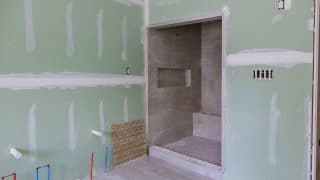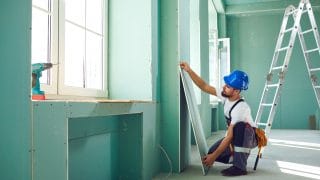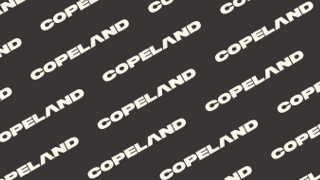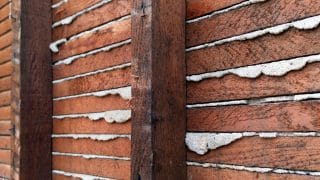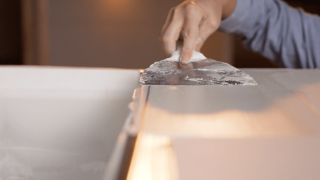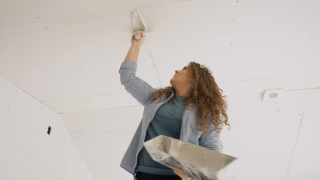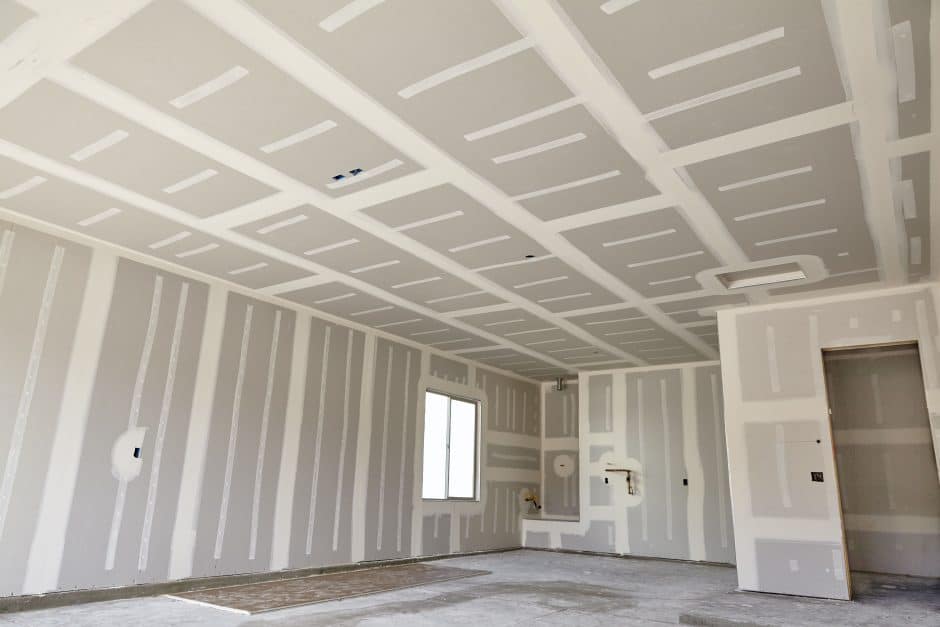
During the housing and baby boom following WW2, drywall became a staple on construction sites of all types. Rather than the painstaking process of nailing wood or metal lathe to framing and covering it with plaster, drywall was a faster option that requires less skill to hang. There are now several types of drywall, including standard, mold-resistant, and soundproof, to name a few. Another variant—popular for its ability to save life and property—is fire-rated drywall. This guide on fire-rated drywall and how it works will help explain it all.
What is fire-rated drywall?
All drywall is fire-resistant. A sheet of drywall has a gypsum core, which is a non-combustible material made from calcium sulfate dihydrate and water. Fire-rated drywall takes this a step further by adding in other non-combustible materials like glass fibers and minerals.
Understand that the drywall’s fire rating isn’t necessarily for the individual sheets of drywall. It’s rated for an approved wall system, including the studs, hardware, and installation methods.
Type X drywall
Type X drywall is basic fire-rated drywall. It contains the same gypsum material as standard drywall, with the glass fibers added in for structural integrity during extreme heat conditions. It’s often used between garages and living spaces adjoining and above the garage.
Type X rated drywall comes in sheets 48-inches wide and in lengths up to 16-feet long, and it’s usually ⅝-inch thick. The added 1/8th inch and glass do make this much heavier than standard drywall, but layers of two sheets of drywall totaling 1 ¼-inches thick give the wall system a fire rating of up to 2 hours.
Type C drywall
If the Type X drywall is the basic model, Type C is the new and improved version with additional fire-resistant materials. When this material is exposed to extreme heat, the water contained within the gypsum core becomes steam and dissipates. However, instead of immediately shrinking, Type C drywall contains vermiculite, and this mineral expands under extreme heat, filling the space left by the evaporating water.
Type C fire-rated drywall comes in standard sizes like Type X drywall, but it’s also available in ½-inch thicknesses to make it more manageable. It also lasts longer than Type X drywall, with a single sheet lasting as long as 2 hours.
Note: Type C is not universally accepted by local building codes the way Type X is. Builders should check with local fire code officers to ensure that Type C is acceptable, and to determine which thickness the project requires.
How does fire-rated drywall work?
Regular drywall is non-combustible, but it’s not impenetrable. As the heat intensifies and the drywall heats up, the water in the gypsum core releases in the form of steam. This causes the drywall to shrink and eventually crumble. This process can take up to 30 minutes, meaning even standard drywall can help resist the spread of fire and gives the home’s occupants time to escape.
During the housing and baby boom following WW2, drywall became a staple on construction sites of all types. Rather than the painstaking process of nailing wood or metal lathe to framing and covering it with plaster, drywall was a faster option that requires less skill to hang. There are now several types of drywall, including standard, mold-resistant, and soundproof, to name a few. Another variant—popular for its ability to save life and property—is fire-rated drywall. This guide on fire-rated drywall and how it works will help explain it all.
What is fire-rated drywall?
All drywall is fire-resistant. A sheet of drywall has a gypsum core, which is a non-combustible material made from calcium sulfate dihydrate and water. Fire-rated drywall takes this a step further by adding in other non-combustible materials like glass fibers and minerals.
Understand that the drywall’s fire rating isn’t necessarily for the individual sheets of drywall. It’s rated for an approved wall system, including the studs, hardware, and installation methods.
Type X drywall
Type X drywall is basic fire-rated drywall. It contains the same gypsum material as standard drywall, with the glass fibers added in for structural integrity during extreme heat conditions. It’s often used between garages and living spaces adjoining and above the garage.
Type X rated drywall comes in sheets 48-inches wide and in lengths up to 16-feet long, and it’s usually ⅝-inch thick. The added 1/8th inch and glass do make this much heavier than standard drywall, but layers of two sheets of drywall totaling 1 ¼-inches thick give the wall system a fire rating of up to 2 hours.
Type C drywall
If the Type X drywall is the basic model, Type C is the new and improved version with additional fire-resistant materials. When this material is exposed to extreme heat, the water contained within the gypsum core becomes steam and dissipates. However, instead of immediately shrinking, Type C drywall contains vermiculite, and this mineral expands under extreme heat, filling the space left by the evaporating water.
Type C fire-rated drywall comes in standard sizes like Type X drywall, but it’s also available in ½-inch thicknesses to make it more manageable. It also lasts longer than Type X drywall, with a single sheet lasting as long as 2 hours.
Note: Type C is not universally accepted by local building codes the way Type X is. Builders should check with local fire code officers to ensure that Type C is acceptable, and to determine which thickness the project requires.
How does fire-rated drywall work?
Regular drywall is non-combustible, but it’s not impenetrable. As the heat intensifies and the drywall heats up, the water in the gypsum core releases in the form of steam. This causes the drywall to shrink and eventually crumble. This process can take up to 30 minutes, meaning even standard drywall can help resist the spread of fire and gives the home’s occupants time to escape.
Type X and Type C drywall have glass fibers and vermiculite (depending on the type) added to the gypsum core, which helps to slow the crumbling process further. Besides just paper and gypsum, these glass fibers and minerals reinforce the structure of the drywall. While heat still affects the drywall, it’s less likely to crumble as quickly, allowing it to stay intact for up to two hours, depending on the type.
Once the drywall panels crumble, however, the fire will spread through the wall. Also, note that fire-resistant drywall will contain a fire to a space, but if there are open doors or non-fire-rated openings such as doors or pass-throughs, the fire will easily spread to other spaces.
Where is fire-rated drywall required?
Building code may call for fire-rated drywall in specific places. These are generally areas of the home where high-heat conditions are more likely to occur, as well as where the possibility of actual combustion is higher. They include:
- Areas around furnaces, boilers, and utility rooms
- Attached garages between the garage and the living spaces
- Rooms with wood-burning stoves and appliances
- Commercial buildings like apartments, condos, hospitals, and office buildings
It’s possible to hang an entire home’s interior with fire-rated drywall, but since it usually costs about 10 to 20 percent more than standard drywall, this can be very expensive.
Conclusion
Fire-rated drywall is more expensive and heavier than standard drywall, it’s true. However, it’s well worth the investment in some spaces, and it’s even a requirement in certain situations. Be sure to find out where fire-resistant drywall is required in your project as well as which type meets local codes. This building material could be the difference between containing a fire to one room or a home being a total loss, so be sure to use it where and how it’s required.
MT Copeland offers video-based online classes that give you a foundation in construction fundamentals with real-world applications, like drywall finishing. Classes include professionally produced videos taught by practicing craftspeople, and supplementary downloads like quizzes, blueprints, and other materials to help you master the skills.

